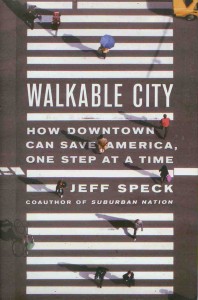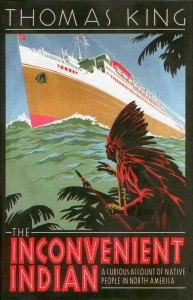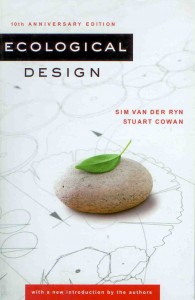Thoughtful Holiday Reading
Three books plus the normal contingent of magazines including the New Yorker were the core of my cerebral stimulation for the holidays. Reading books when one can sleep-in is an even more wonderful experience than usual, and magazines make airports and flight delays more tolerable.
I started with the 10th ANNIVERSARY EDITION of ECOLOGICAL DESIGN by Sim Van Der Ryn & Stuart Cowan which I purchased at GreenBuild 2012, San Francisco. This is a seminal text for the ecodesign industry which is the focus of my work. Often getting back to basic principles is one of the most important things that we can do. The next book that came into sharp focus for me was WALKABLE CITY – How Downtown Can Save America One Step at a Time by my friend JEFF SPECK, the coauthor of SUBURBAN NATION. This brilliant and well researched text outlines principles for a liveable, ecological and sustainable urban model and he describes the successes that are already leading the way to a revitalized urban context in North America’s best and most liveable cities. Finally a totally different book came to me as a Christmas gift and this book took over virtually all my reading time until it was read cover to cover, THOMAS KING’s, THE INCONVENIENT INDIAN, A Curious Account of Native People in North America.
Ecodesign is one of the greatest hopes for saving the planet. Buildings, their construction and their daily use are the largest single consumer of energy and natural resources. Ecodesign is changing this with some new ‘living’ buildings actually being modelled like plants to be a net benefit to their environment. This development and response to the greatest challenge of our time, namely climate change means that today is an inspirational time to be on the forefront of a new architectural era. A relevant paragraph worth consideration in comparison to traditional buildings which degrade their surroundings and consume excessive energy follows;
“Ecological design is simply the effective adaptation to and integration with nature’s processes. It proceeds from consideration of health and wholeness, and tests its solutions with a careful accounting of their full environmental impacts. It compels us to ask new questions of each design: Does it enhance and heal the living world, or does it diminish it? Does it preserve relevant ecological structure and process, or does it degrade it?” page 14 Ecological Design
Designers today are challenged to make show people new ways to live. My goals this year include both the creation of a model eco house and publishing a book on greening the restaurant industry which I feel is a good forum for influencing style and through style – lifestyle because we all need to adapt our lifestyle to a better ecological balance.
Walkability is the key to great urbanism. Imagine the benefits and pleasure of walking in Paris, London, Venice, New York, Quebec City and even where I live in Victoria, BC. There are  three primary benefits that result from walkable cities:
three primary benefits that result from walkable cities:
- When people can walk easily, they use their cars less, they utilize public transit more often and the result is less pollution, healthier environments and improved downtowns.
- Walkable downtowns have better economies, higher property values and stable tax bases.
- Walkable urban areas attract ‘millenials’ the new creative class that is driving the next economic wave in North America. Young people today are more likely to have neither a drivers licence nor a car that at any time since the 1950’s. Cities that attract these people have the most successful businesses in high tech, entertainment and other cutting edge industries.
The Inconvenient Indian by Thomas King is a perfectly timed read for anyone who cares about First Nations or Native Americans , because as 2013 has begun with Idol No More protests, intensified oil pipeline controversy, hunger strikes and native rights all in the forefront of the public eye. This book is a massive historical survey yet it is brought to us by a highly accessible and humorous writer as a gift to our social knowledge bases as well as a ‘throw-down’ challenge for us all to increase our awareness of ‘Indians’ in North America. For anyone who has respect for the natural world, the history of indigenous peoples who were able to live in balance with their environment for thousands of years, contrasts sharply with our society which has virtually imperilled the entire continent and planet in centuries or arguably and actually mere decades of wanton waste and environmental destruction. A learning of respect for and harmony with our environment is something that many like me feel could be learned from the original native North Americans. If any of these topics interest you too and you know ways that I can learn more and do more, please feel free to contact me and encourage me in these areas. The eco house will need financial, technical and social support, my green restaurant book will be a forum for the leading edge of the hospitality industry and we all need to apply pressure on our governments to start to value indigenous societies that can show us how to live as if both past and future generations matter today. Happy, healthy, abundant and fulfilling new year to everyone.
If any of these topics interest you too and you know ways that I can learn more and do more, please feel free to contact me and encourage me in these areas. The eco house will need financial, technical and social support, my green restaurant book will be a forum for the leading edge of the hospitality industry and we all need to apply pressure on our governments to start to value indigenous societies that can show us how to live as if both past and future generations matter today. Happy, healthy, abundant and fulfilling new year to everyone.


 JC Scott
JC Scott


Leave a Reply
Want to join the discussion?Feel free to contribute!